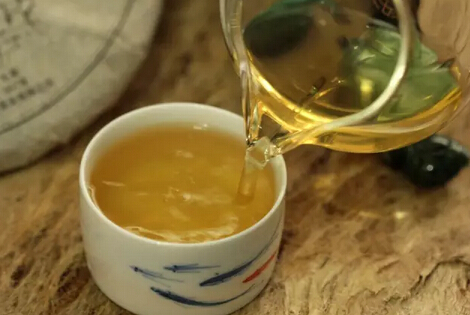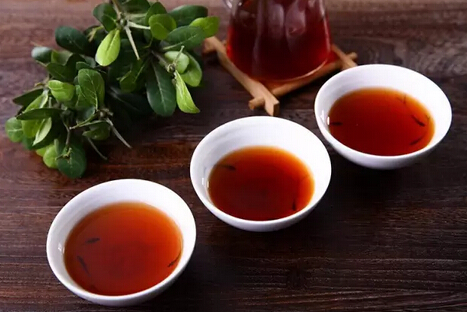Basic Overview of Raw Tea
Raw tea is freshly picked tea leaves that are naturally aged without undergoing pile-fermentation. Raw tea has a strong and stimulating flavor. Newly made or shortly stored raw tea has a pronounced bitterness, with a light or yellow-green color and taste. Raw tea is suitable for drinking.
Health Benefits of Raw Pu-erh Tea
Pu-erh tea is made from sun-dried large-leaf tea leaves from specific regions of Yunnan Province, which are then processed through post-fermentation into loose tea or compressed tea. It is a highly distinctive category of Chinese tea. In the current market, Pu-erh tea products are classified based on their characteristics into natural classification and academic classification.
Natural classification refers to sun-dried tea leaves that have not undergone pile-fermentation, commonly known as raw Pu-erh tea. Academic classification refers to Pu-erh tea that is processed through artificial fermentation, commonly known as ripe Pu-erh tea. Both types of tea offer many health benefits, depending on personal preference.

Raw tea primarily helps cleanse the intestines, reduces fat, boosts energy, lowers blood pressure, and aids in weight loss, making it suitable for younger individuals. However, due to its high active components, it is not recommended for those prone to insomnia, suffering from colds or fever, having stomach ulcers, or pregnant women.
Pu-erh tea has many health benefits, but the following precautions should be noted (must-read):
1. For those who are prone to heatiness, constipation, or acne due to a deficiency-heat constitution, raw tea or lightly fermented Pu-erh tea can be consumed. If the bitter taste is unappealing and ripe tea is preferred, remember to add white chrysanthemum, honey, or lotus leaves when brewing.
2. Like green tea, raw tea is cooling in nature and is not suitable for those with a cold stomach or poor digestion! Only ripe tea has the effect of nourishing and protecting the stomach.
3. Regarding weight loss effects, Pu-erh tea does have weight loss benefits, but its effectiveness varies from person to person. It is important to view Pu-erh tea rationally, as it is not a weight loss drug.
Pu-erh tea aids weight loss mainly by regulating the digestive system, thereby enhancing the digestion, absorption, and consumption of fat, commonly referred to as "scraping oil." However, for those who are not actually overweight but merely feel so, Pu-erh tea will naturally have no effect.
At the same time, the weight loss effects of Pu-erh tea become apparent only after long-term consumption, so do not give up easily if no immediate results are seen.
4. Precisely because Pu-erh tea regulates the digestive system, some thin individuals with poor digestion may gain weight or become healthier after drinking Pu-erh tea, as their digestive and absorption systems improve. In short, drinking Pu-erh tea will make you healthier, provided it is consumed correctly and consistently.

Processing Steps of Raw Pu-erh Tea
Yunnan large-leaf tea fresh leaves → withering → killing the green → rolling → sun-drying → steaming → pressing → drying:
Picking: Hand-picking one bud and two leaves is ideal.
Withering: Spread the leaves in a ventilated, dry area away from direct sunlight to reduce moisture by 30%, placing them on bamboo mats. The duration depends on the moisture content of the fresh leaves and the ambient temperature and humidity.
Killing the green: Removes the grassy smell and evaporates some moisture, making the leaves easier to roll and shape after frying.
Rolling: Can be done by machine or by hand. Breaks the cell walls of the tea leaves, allowing the tea juice to dissolve more easily in the soup during brewing, improving extraction efficiency. Also shapes the tea leaves.
Sun-drying: The rolled tea leaves are naturally sun-dried, preserving the maximum amount of organic and active substances. Sun-drying helps retain the original flavor of the tea.
Steaming and pressing: The sun-dried tea leaves are steamed to moisten them and then pressed into various molds to form shapes. This extracts fragrance and causes the pectin in the tea leaves to surface, aiding in shaping and imparting a unique aroma distinct from loose tea.
Drying: Reduces the moisture content to a level safe for storage, generally below 10% for Pu-erh tea.
Distinguishing Raw and Ripe Tea

Raw Tea
Process: After picking, the fresh leaves undergo killing the green, rolling, and drying to become raw loose tea. They are then compressed to form compressed raw tea products. Leaf color and aroma: The leaves range from green to dark green, with some turning yellow-red. Newly made tea cakes usually have a subtle aroma, but high-temperature drying can impart a sweet, roasted fragrance.
Taste: Strong and highly stimulating. If subjected to high temperatures, the tea soup is clear, sweet, and thin, with slight astringency, similar to Taiwanese green tea.
Soup color: Primarily yellow-green or green.
Leaf base: Newly made tea products are mainly green or yellow-green. Highly active, flexible, and elastic.

Ripe Tea
Process: After picking, the fresh leaves undergo killing the green, rolling, and drying to become raw loose tea. The raw loose tea is then subjected to rapid artificial post-fermentation and pile-fermentation with water sprinkling to become ripe loose tea (Pu-erh loose tea). It is then compressed to form compressed ripe tea products.
Leaf color and aroma: The leaves are black or reddish-brown, with some bud tea appearing dark golden. There is a strong pile-fermentation odor, with lighter fermentation resembling longan fragrance and heavier fermentation resembling a damp straw mat smell.
Taste: Thick, sweet, and almost non-astringent, with long-lasting infusions.
Soup color: Lighter fermentation results in deep red, while heavier fermentation produces a black hue.
Leaf base: Pile-fermented with water sprinkling. Lighter fermentation results in reddish-brown leaves that are less flexible. Heavier fermentation produces dark brown or black leaves that are hard and brittle.